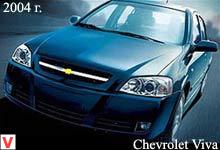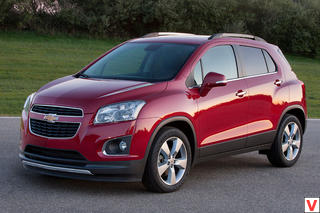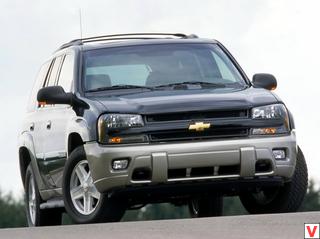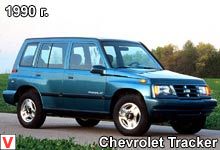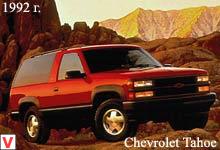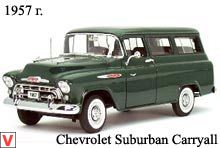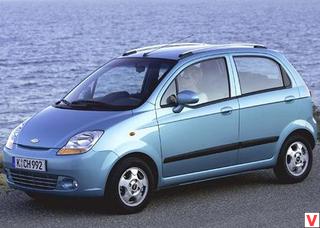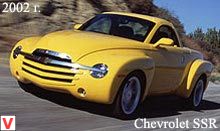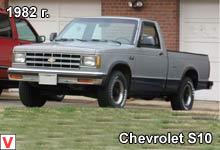
Chevrolet Caprice (later called the Caprice Classic) was a series of cars produced by Chevrolet (a division of General Motors) from 1965 to 1996. During its history, it has always been the most expensive (and most luxurious) model from Chevrolet in the class of full-size cars including models such as Biscayne, Bel Air and Impala. For the first time, the Chevrolet Caprice was introduced in mid-1965 as a version of the 4-door Chevrolet Impala sedan with a suite of luxury options, in response to the successful Ford LTD range.
The Chevrolet Caprice model included a stiffer suspension, finishes made from higher-quality fabrics, a vinyl-covered roof, new door panels, finished in the same way as the dashboard, walnut-colored inserts and other improvements. The name “Caprice” was suggested by Bob Lund (Commercial Director of Chevrolet), after visiting a wonderful eponymous restaurant. The Caprice Sedan was well received, and already in 1996 it was decided to single out a full-fledged top line, including the version of the Chevrolet Caprice, as well as the station wagon version with exterior wood trim. Note that since 1954 it was the first wagon with such exterior trim.
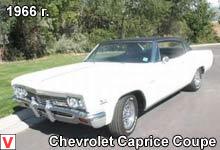
Under the hood of each version was installed V8 engine. At that time, two variants of the power unit were developed, namely: Turbo Jet V8 with a volume of 7.0 liters, whose capacity was 425 hp and Turbo Jet V8 with a volume of 6.5 liters and 325 hp. 4 transmission options were offered. In the first years of production, only a 3-speed manual transmission was standard. The following options were offered: 4-manual transmission; Powerglide 2-speed automatic transmission; 3-speed automatic transmission Turbo Hydramatic (only for engines of 6.5 liters).
Cars were equipped with cruise control, air conditioning, power windows and seats, as well as stereo radio. For 1966, the Chevrolet Caprice receives minor external changes that affect the grille and rear lights. In the list of options of the car appeared: the automatic air conditioning system "Comfortron" and the steering column "Tilt and Telescopic", which had 6 tilt positions, as well as a telescopic function.
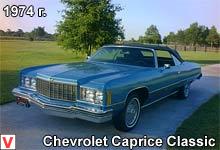
As standard, the Caprice sedan and coupe had a high-quality interior trim, as well as vinyl bench seats with a retractable armrest in the center. As an option, the Strato seats with bucket-shaped backrests were offered. Cars in the station wagon body were also equipped with vinyl seats. In 1967, the Chevrolet Caprice received more serious changes. The car received more rounded lines of the body and a new grille. As for the interior, there appeared a new instrument panel with round instruments, a new steering wheel, and also a cassette stereo tape recorder.
The engines and transmissions of 1966 remained, but the list also included a 275-horsepower 5.4-liter Turbo Fire V8. Note that the 3-speed automatic transmission, which was installed only with a 6.5-liter engine, became available for the new engine. Along with the front disc brakes, new double brake cylinders also appeared. Small external changes were made in 1968, which include: a new grille, rear lights integrated into the bumper and dimmed headlights.

There was also a new 5.0-liter Turbo Fire V8 engine with a power of 200 hp, which was installed as standard. Inside, the dashboard was again updated, with the same horizontal speedometer, as well as the steering wheel. In 1969, Chevrolet Caprice and other full-size cars from Chevrolet were redesigned with new body lines and front bumpers that wrapped the grille (all also installed hidden headlights on which washers could be installed). 3 023 mm wheelbase, inner body shell with trim were transferred from the 1965 model. The Caprice station wagon was renamed Kingswood Estate, but continued to use the same exterior and interior design concept as the coupe and Caprice sedan.
In the standard now installed separate front seats with head restraints. Also in 1969, as an option, a new variable-intensity power steering system developed by General Motors was offered. The standard engine has become more powerful. It was a 235-horsepower V8 with a volume of 5.4 liters.

The following engines were offered as options: Turbo Fire V8 with a volume of 5.8 liters, capacity of 255 hp and 300 hp; 265-horsepower 6.5-liter Turbo Jet V8; 7-liter Turbo Jet V8 with 335 hp and 390 hp. Now the Turbo Hydramatic 3-speed automatic transmission was available for all V8 engines, although the Powerglide 2-speed “automatic” was still offered for V8 power units with 5.4 and 5.8 liters. In 1970, he underwent some minor external changes that affected the bumpers (new vertical taillights built into the bumper appeared).
Front disc brakes and tires with a hard fiberglass breaker on 15-inch rims were already fitted as standard, along with a more powerful 250-horsepower 5.8-liter Turbo Fire V8 engine. The following power units were offered as options: Turbo Fire V8 with a volume of 5.8 liters and 300 hp capacity. and the new 265-strong Turbo Fire V8 with a volume of 6.6 liters. The top 7-liter engines replaced the 7.5-liter Turbo Jet V8 with a capacity of 345 hp. and 390 hp, which were more dynamic. However, while the 250-hp and 265-hp Turbo Fire V8 power units used regular gasoline, 300-hp and both engines of 7 volume. 5 liters required high quality fuel.
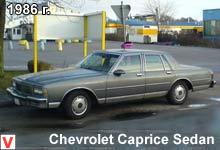
The 2-step Powerglide “automatic” is now offered only with a 5.8-liter V8. In 1971, the Chevrolet Caprice was again completely redesigned and had a longer wheelbase (3 086 mm). Body styles have become more streamlined. The front disc brakes were also fitted as standard along with a 6.6-liter Turbo Fire V8 engine with a power of 255 hp. Also, the 3-speed Turbo Hydramatic automatic transmission and power steering with variable gain were standard on all Caprice models. In 1972, the grille was renewed once again. In 1973, the Chevrolet Caprice was renamed the Chevrolet Caprice Classic, getting a new grille, front bumper and updated square taillights integrated into the bumper.
This year, Caprice appears in the back of a cabriolet, borrowed from the Impala series, and the station wagon renamed Kingswood Estate in 1969 is called Caprice Estate. In 1974, the Caprice Classic undergoes some bodywork improvements. A locking system also appeared, which did not allow the driver to start driving until the driver and the passenger in front fastened his seat belt. In 1975, Caprice gets a new grille. In connection with the tendency to save fuel, all models except the station wagon were equipped with a 145-strong carburetor engine small block V8 of 5.8 liters, except for California, where the 155-strong V8 of 5.8 liters became the standard engine.
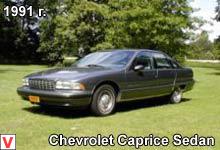
The following power units were installed as options: 180-strong small block V8 with a volume of 6.6 liters and 215 strong big block V8 with a volume of 7.5 liters, later became available in California. 1976 was the sixth and last year for the second-generation Chevrolet Caprice (1971-1976). This year, some minor changes were made to the exterior and interior of cars. It is worth noting that this was the last year of using the V8 engine with a volume of 7.5 liters. Models of 1977 have become smaller, due to the tendency of General Motors to reduce cars in size while maintaining the same name, the same spaciousness and trim in the cabin as their predecessors.
Together with the size of the cars and reduced their power. The power unit V8 was no longer standard (except for station wagons), it was replaced by a very reliable 6-cylinder V6 engine with a volume of 4.1 liters, whose power was 110 hp. As standard, a 5-liter V8 engine with a power of 140 hp was installed as standard (for other versions it was optional). The V8 small block engine with a volume of 5.8 liters and a power of 170 hp was offered as an option. being top. In 1979, the 5.8-liter V8 engines were no longer installed on civilian vehicles and were used exclusively in vehicles designed for use by the police.
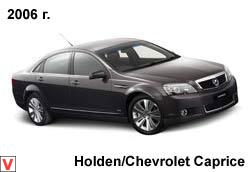
In 1980, the engines were added to the list of options: a 4.4-liter V8 and a 5.8-liter V8 diesel powerplant from Oldsmobile, which was offered until 1984. In the period from 1977 to 1990. Caprice cars have received a new grille, taillights, headlights with an advanced composite structure. In the model range Caprice were presented: 4-door sedan, 2-door coupe, 6 - and 9-seater station wagon. In 1986, the Caprice Classic Brougham version was released, which had a more luxurious interior than the standard Caprice Classic.
In 1987, an “LS” option package was released for the Caprice Classic Brougham, which included: an exclusive Lando roof (with a roof that opens only above the rear seat) of vinyl plywood and an even more luxurious interior trim. In 1991, the car has undergone significant restyling. In place of the former straightness of the body, came a new aerodynamic appearance with a much more streamlined body panels.
However, the chassis and other technical elements were moved from previous models. When developing the new Caprice style, special attention was paid to Ford's successful Taurus model. Now Chevrolet Caprice had only two options for the body: 4-door sedan and station wagon. In 1993, the company once again revised the body design for the Caprice and it was decided to remove the overhanging “skirts” over the rear wheels from the sedan, but they remained in the versatile version until production was completed.
For the fourth generation Chevrolet Caprice, 4 engine options were proposed: V8 LT1 with a volume of 5.7 liters; V8 L05 volume of 5.7 liters; V8 L03 volume of 5.0 liters; V8 L99 volume of 4.3 liters. For all engines offered a 4-speed automatic transmission. The wheelbase of the car was 2944 mm. Car Chevrolet Caprice had positive reviews from critics. In 1996, the Chevrolet Caprice was discontinued. In 2000, General Motors regained the Chevrolet Caprice name in the Middle Eastern markets.
It was a car based on the Holden Statesman car, produced by Holden (a GM subsidiary) in Australia. This car had a left-handed and right-handed version. The Middle East Chevrolet Caprice was released in four versions: the base “LS”, the improved “LTZ”, the sports “SS” and the top “Royale”.
The differences between the modifications were mainly in their technical equipment. On the “LS” and “LTZ” models, the Gen III V8 engine with a volume of 5.7 liters and a capacity of 295 hp was installed, and on the “SS” and “Royale” models all the same Gen III V8, but already outstanding 325 hp. In November 2006, a fully updated Chevrolet Caprice series (built on the base of Holden WM Statesman) was released, which included all the same modifications: “LS”, “LTZ”, “SS” and “Royale”.
